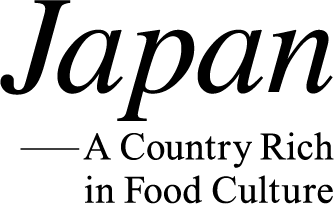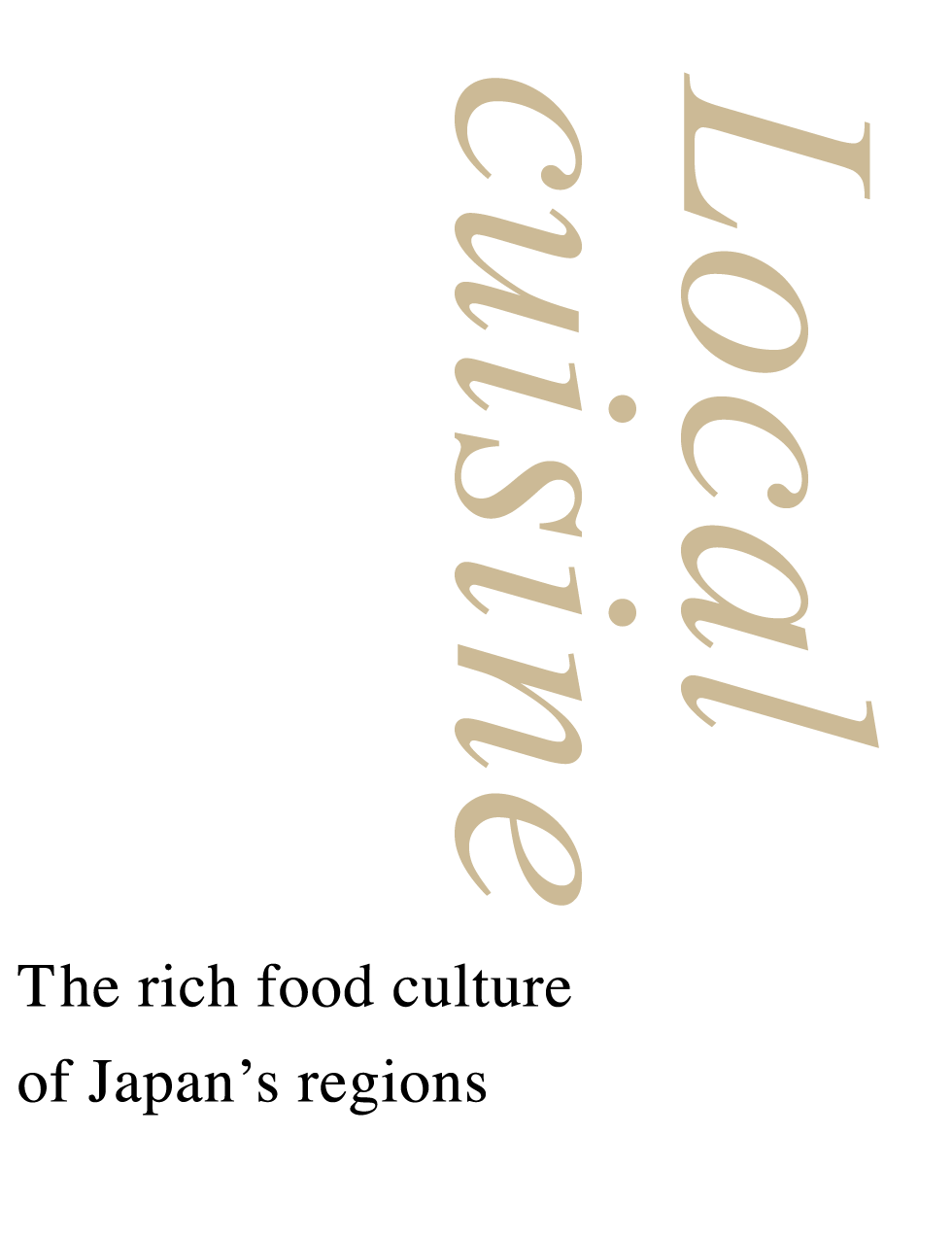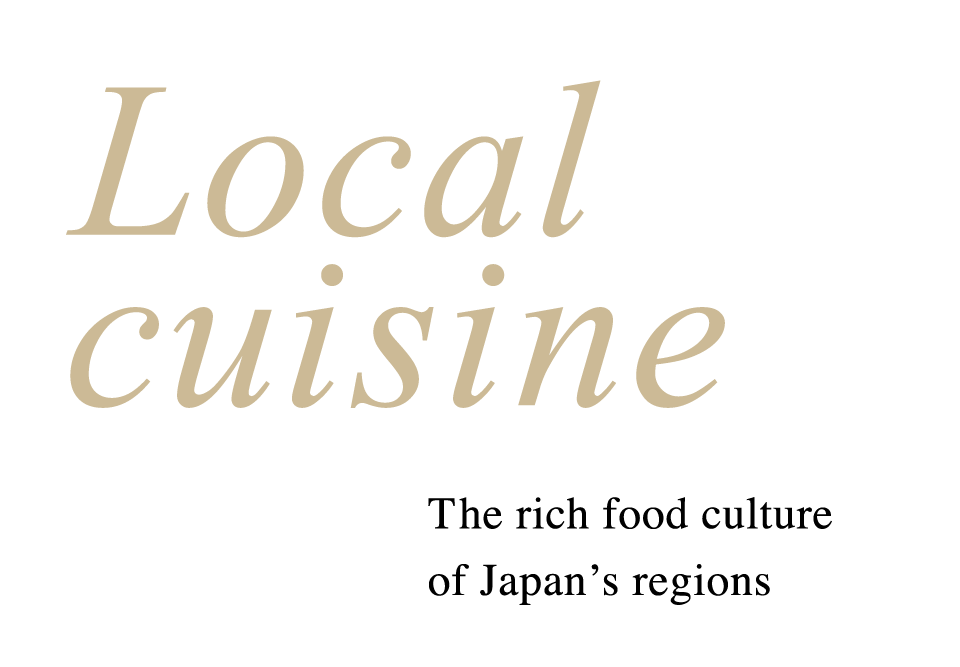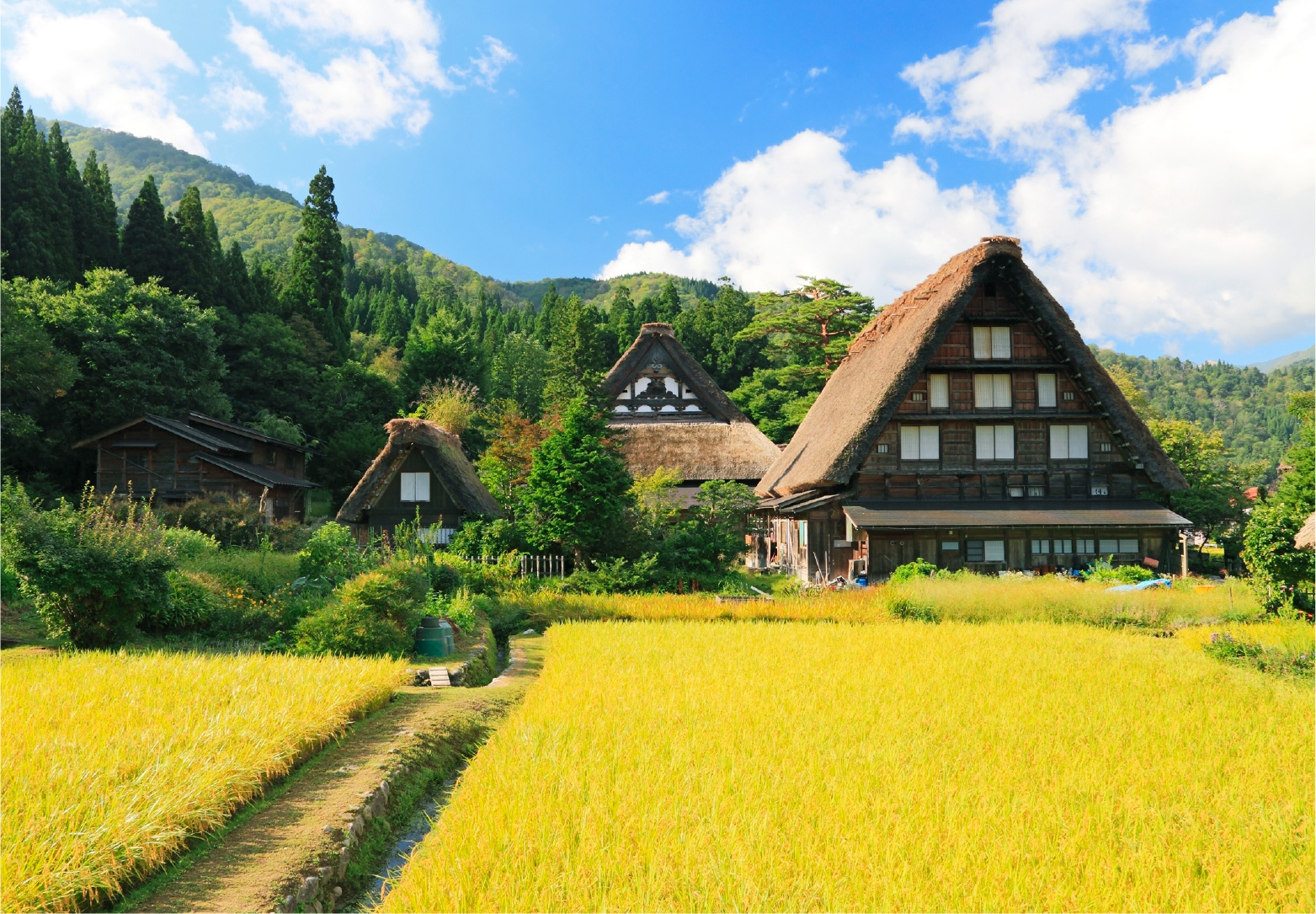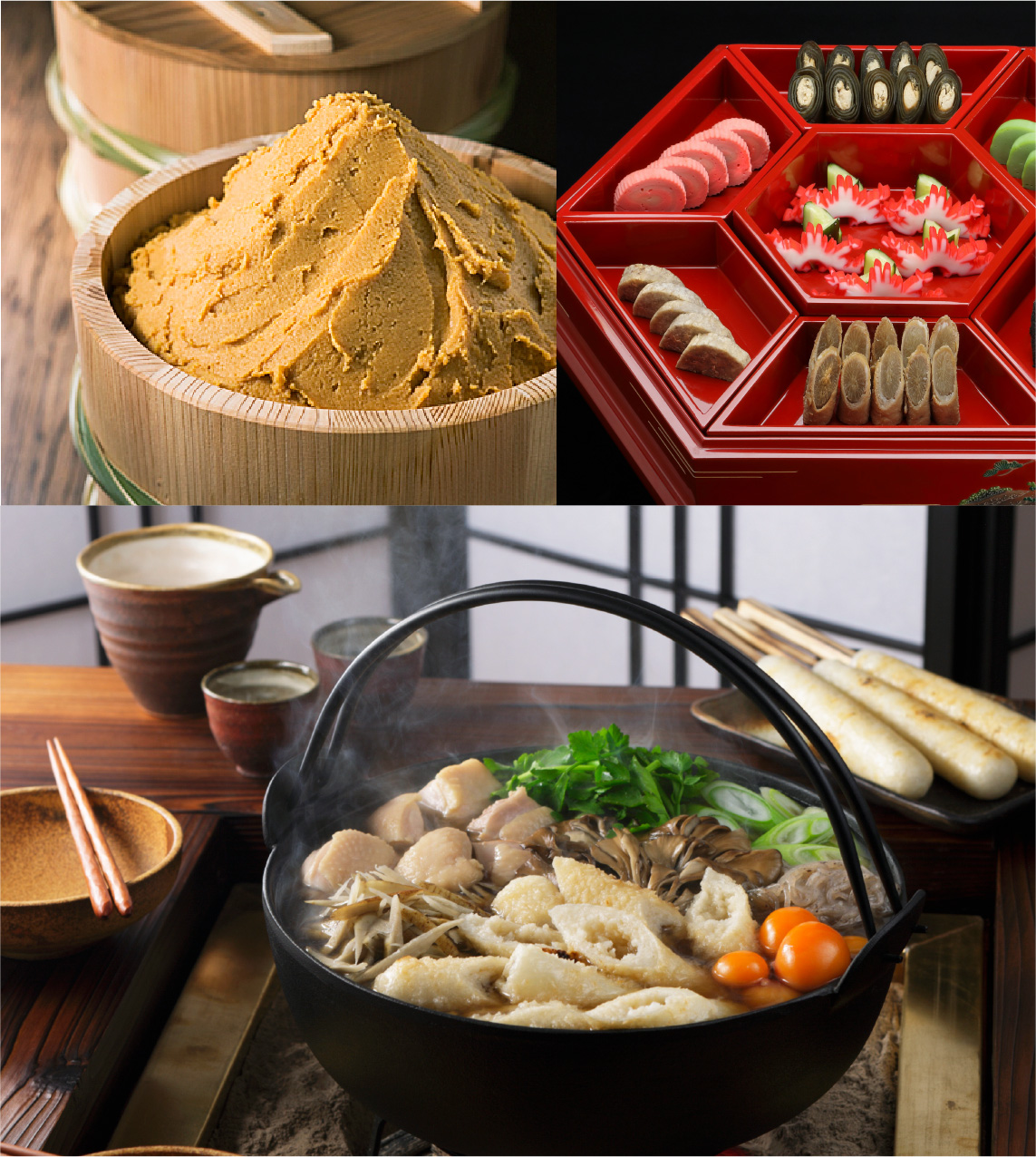The unique natural environment, ingredients, history, and culture of each Japanese region has given rise to a variety of local dishes that have been passed down through the generations. To give just a small handful of examples, these include kiritanpo-nabe, the hotpot with grilled rice sticks that is a specialty of the rice-growing region of Akita; Nara’s kakinoha-zushi—sushi wrapped in persimmon leaves; and, in Okinawa, Ryukyuan cuisine, whose history dates back to the time of the Ryukyu Kingdom. The flavors of fermented seasonings such as miso and soy sauce differ in each region. For example, the rice, barley, and soybeans used as basic ingredients in miso result in significant regional variations.
In addition, interaction with other countries resulted in the assimilation of Western influences in the form of Nanban culture, with ingredients such as sugar, chili peppers, and potatoes reaching Japanese shores. The Kitamaebune ships used to transport rice would return home loaded with kelp, which became an essential element in Kyoto and Osaka cuisine. In addition, these had a major impact on the distinctive food customs of each region and local cuisine was also influenced by interregional exchange, further enhancing the distinctiveness of regional dishes.
